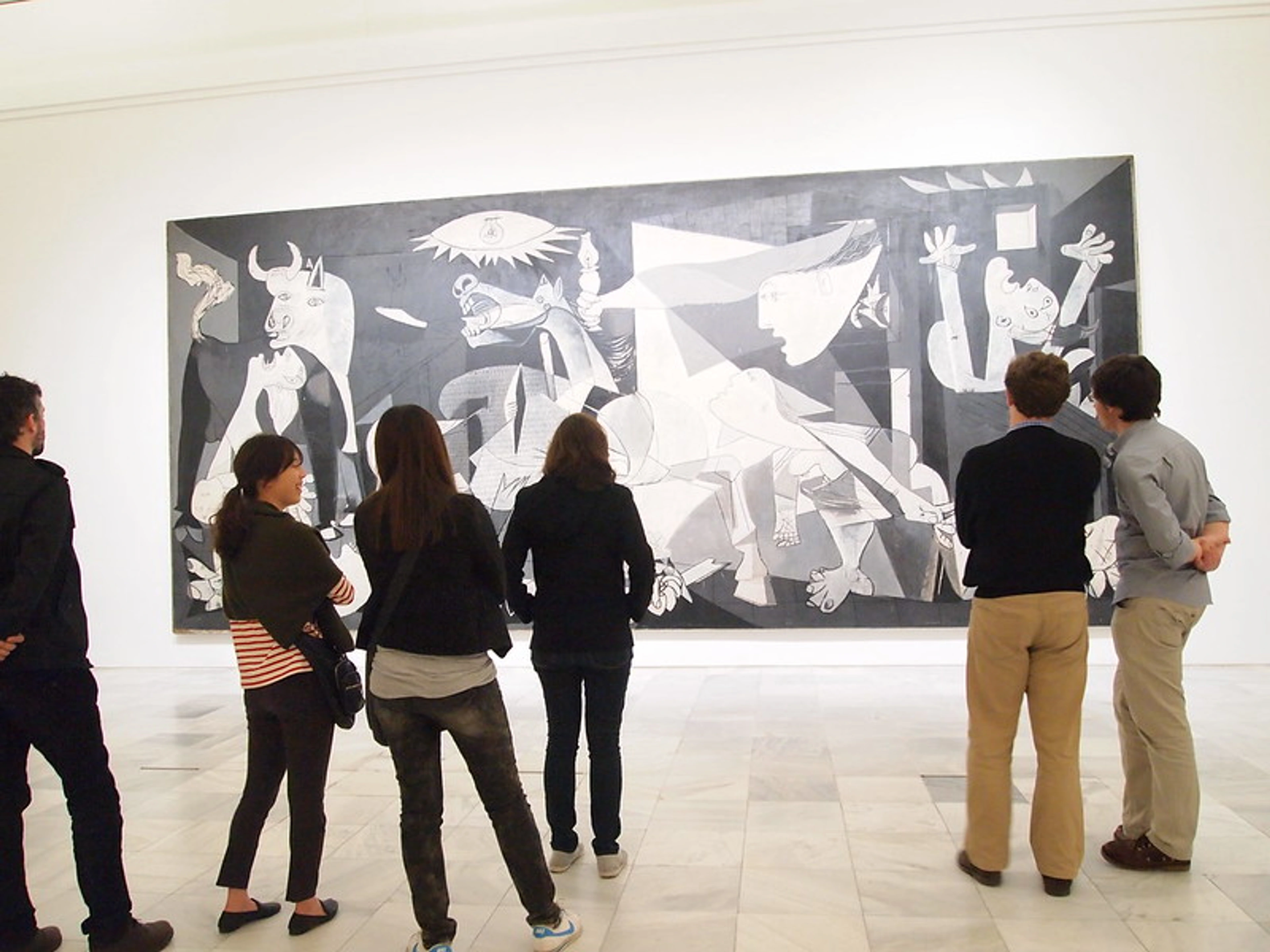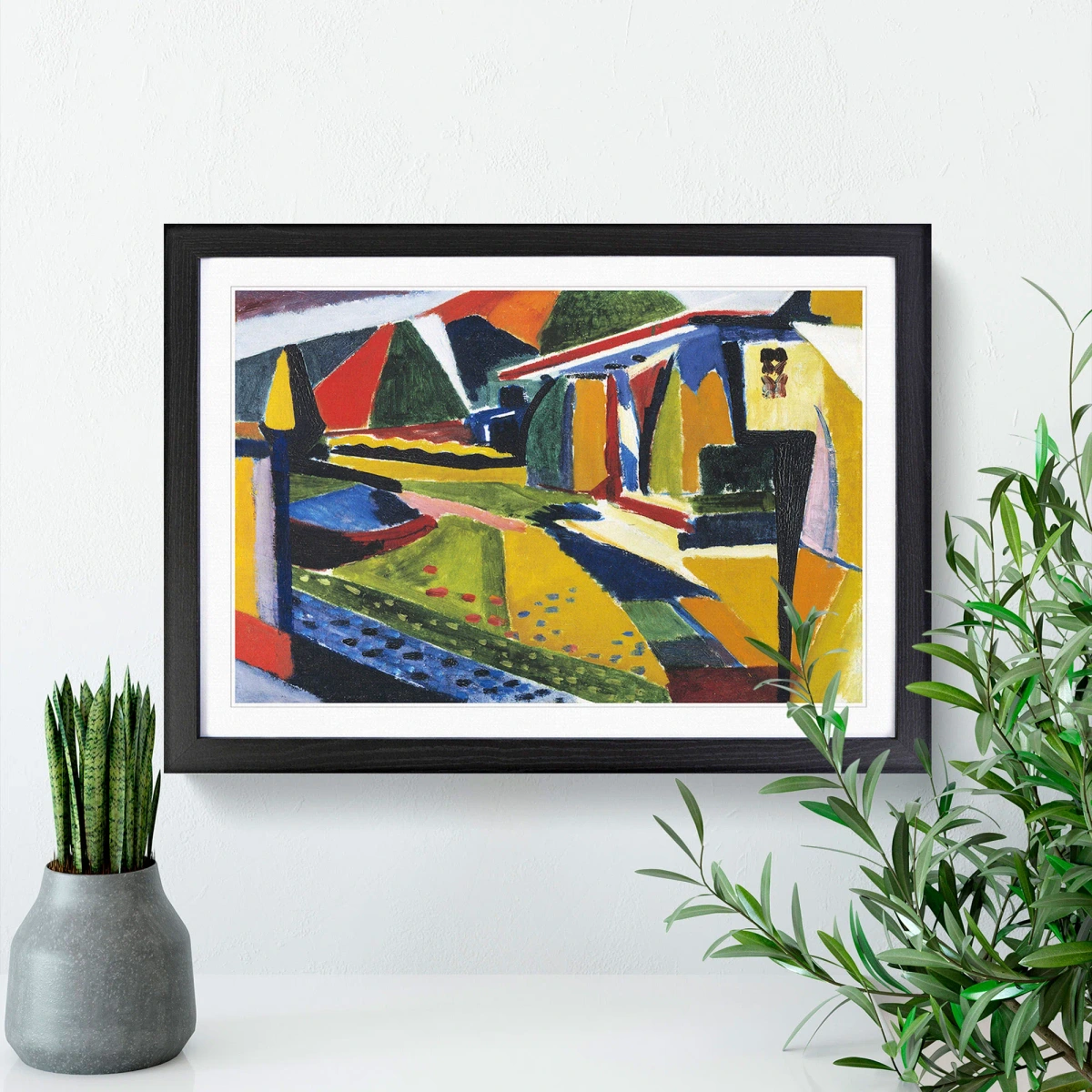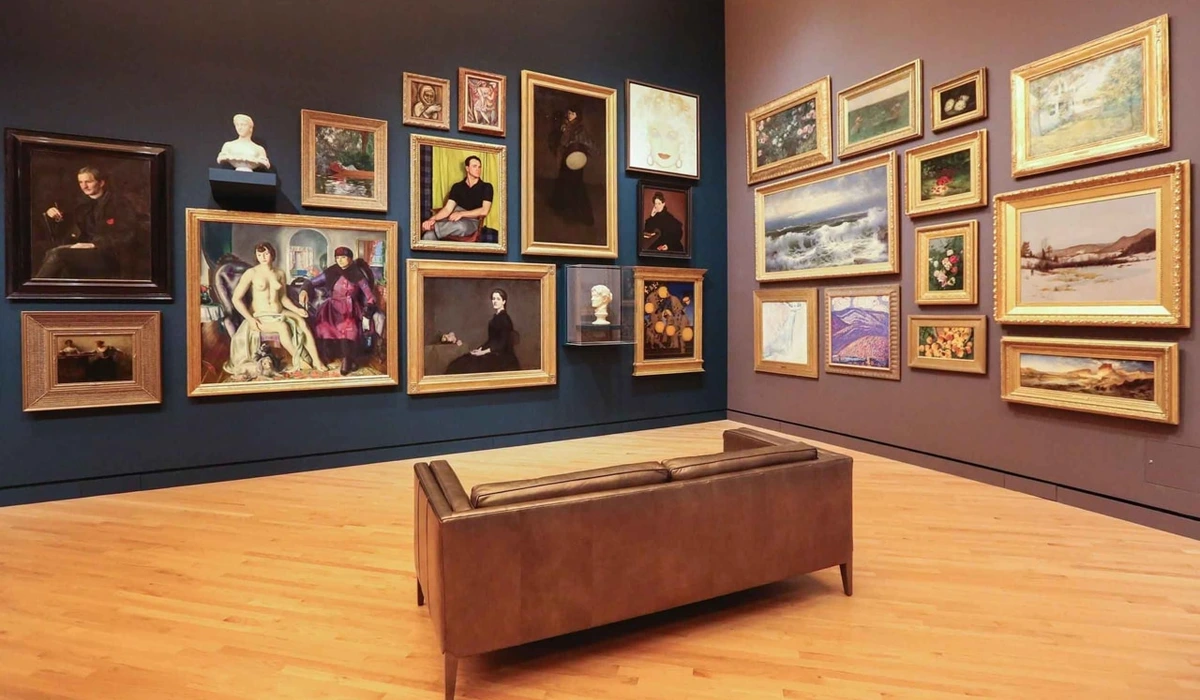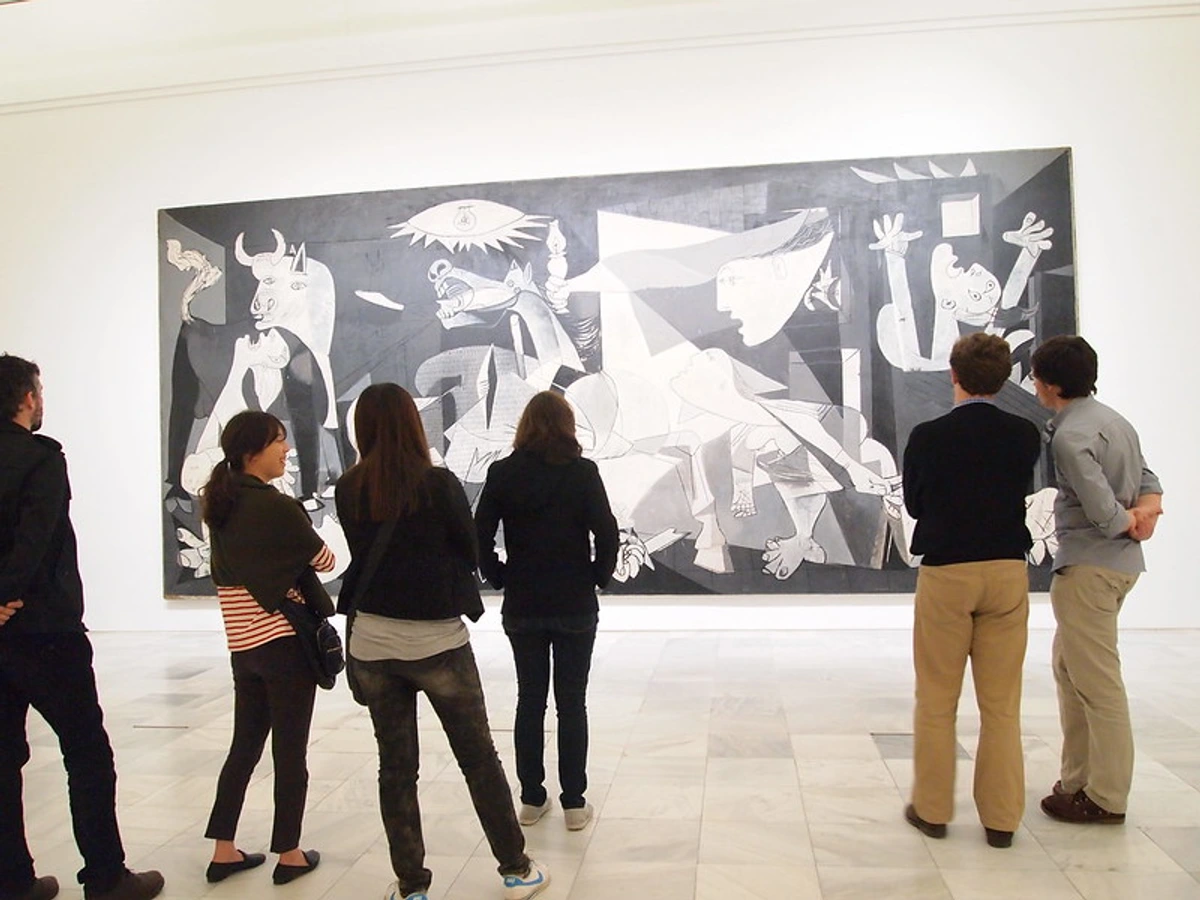
Why the Wealthy Buy Art: Investment, Status, Passion & Hidden Reasons
Ever wondered why the ultra-rich spend millions on art? It's a complex mix of investment, status, passion, and hidden factors. An artist's candid look.
Beyond the Price Tag: Unpacking Why the Wealthy Really Buy Art
Ever scrolled past headlines about multi-million dollar painting sales and thought, "Why on earth would someone spend that much on... that?" You're definitely not alone. It's a question that floats around a lot, sometimes whispered in galleries, sometimes debated over coffee. Is it just because they can? Or is there something more complex simmering beneath the surface of the high-end art market?
Let's be honest, from the outside, the world of blue-chip art collecting can seem opaque, maybe even a little absurd. (Think of "blue-chip" like the established, reliable stocks in the art world – works by artists with proven historical significance and market value, like a Picasso or a Basquiat). It feels like knowing the secret handshake to a club you didn't realize existed. But as someone who spends their days creating, thinking about, and occasionally selling art, I've pondered this quite a bit. It's rarely just one single reason. Instead, it's usually a cocktail of motivations, some practical, some deeply personal, and some... well, let's just say 'social'.
So, let's pull back the velvet rope and explore the fascinating, multifaceted reasons why wealthy individuals choose to invest their time, energy, and considerable resources into acquiring art. It's more than just expensive wallpaper.
It's Not Just About Decor (Though That's Part of It)
Okay, let's get the obvious out of the way. Yes, art can look fantastic hanging above a minimalist sofa or making a statement in a grand entryway. Wealthy individuals often own large, architecturally significant homes, and unique, high-quality art is a natural fit for elevating these spaces. It adds personality, colour, and a focal point. You can find plenty of tips on how to decorate your home or even specifically how to decorate a wall, and art is almost always part of that equation.

But reducing the purchase of a multi-million dollar Gerhard Richter or a prized Basquiat to mere decoration is like saying people buy Ferraris just for the grocery run. It misses the bigger picture entirely. While aesthetics play a role, the "why" usually runs much deeper. So, what are these deeper currents driving the market?
The Heavy Hitters: Key Motivations for Buying Art
Let's dive into the core reasons that drive high-net-worth individuals to the art world.
1. Art as an Investment and Asset Diversification
This is often the first reason people jump to, and it's certainly a significant factor for many. Art, particularly works by established artists with strong track records (blue-chip art), can be considered an alternative asset class. But how does that actually work?
For one, high-quality art has the potential for potential appreciation over time, much like stocks or real estate. We constantly see record-breaking auction results fueling this perception, making headlines and capturing imaginations. Beyond simple growth, art offers diversification; wealthy individuals often seek to spread their investments beyond traditional stocks and bonds. Art can be a tangible asset that might perform differently from financial markets, potentially offering a hedge against volatility. Tangible assets like art are also sometimes seen as a way to store value, potentially protecting wealth from inflation, especially in uncertain economic times.
Another key aspect is wealth transfer. Art can be a vehicle for transferring wealth across generations, sometimes with complex implications for estate planning. Valuing art for estate purposes isn't as simple as checking a stock price; it often requires expert appraisals and navigating specific tax laws, adding layers of complexity that necessitate professional advice.
Furthermore, art can function as portable wealth. Unlike real estate or businesses tied to a specific location, a valuable painting or sculpture can, in theory, be moved across borders more easily. This can be a significant factor for international collectors or those seeking assets that offer flexibility in a globalized world.
However, it's crucial to understand that art as an investment carries significant risks. The art market can be illiquid (selling quickly at a good price isn't guaranteed), values can fluctuate wildly, and understanding art prices requires expertise. It's not the same as buying index funds. Taste changes, artists fall out of favour, and provenance (the history of ownership) is critical. For every soaring success story, there are pieces that fail to sell or decrease in value. It's a market driven by more than just balance sheets.

2. Status, Prestige, and Social Currency
Let's not mince words: owning significant works of art is a powerful status symbol. It signals not just wealth, but also sophistication, cultural awareness, and access. It's the modern equivalent of Renaissance patrons commissioning portraits – it announces your place in the social hierarchy.
Owning challenging or historically important art suggests a level of intellectual curiosity and refined taste that goes beyond mere material wealth, acting as a form of signaling taste and intellect. It says, "I don't just have money; I understand culture."
Collecting also means joining an elite circle. The upper echelons of the art world – exclusive gallery dinners, museum board memberships, VIP previews at art fairs like Art Basel or Frieze – are powerful social networks. Owning important art grants access to this world, facilitating connections with other influential individuals. It's where deals are struck, reputations are made, and trends are often set. You can get a glimpse by reading tips for visiting art fairs.
Major collectors often become known for their collections, sometimes even donating them to museums (think Guggenheim, Frick, Broad). This creates a lasting legacy building associated with their name and taste, ensuring they are remembered not just for their financial success, but for their cultural contribution. Beyond personal legacy, art can also be a tool for building a corporate or family brand/identity, projecting an image of sophistication, stability, or forward-thinking vision.
And, of course, a significant artwork is undeniably a conversation starter, a way to impress guests and steer conversations towards culture and aesthetics. It's hard to ignore a Rothko or a Koons in the living room, isn't it?
This is also where the influence of major players comes in. How are trends set in this high-stakes game? Major galleries, powerful auction houses, and a handful of influential collectors and critics often shape what is considered 'hot' or historically significant, influencing taste and driving market dynamics. It's a complex ecosystem where reputation and buzz can be as important as the art itself.
3. Genuine Passion, Aesthetic Pleasure, and Intellectual Engagement
While cynicism about the art market is easy, we absolutely cannot discount genuine passion. Many wealthy collectors possess a deep love for art and the artists who create it. For some, it's simply about the aesthetic joy derived from living with beautiful, thought-provoking objects. The visual impact, the emotional resonance – these are powerful motivators. It's about connecting with something beyond the mundane, something that speaks to the soul. Understanding the meaning of art can be a lifelong journey, and for passionate collectors, it's a journey they actively pursue.
Engaging with art also offers significant intellectual stimulation. Learning about art history, understanding different art styles, decoding symbolism, and learning how to read a painting – these are intellectual rewards that come with collecting. It becomes a process of continuous learning and discovery, a way to keep the mind sharp and engaged.
Often, there's a deep personal connection to the work. An artwork might resonate with a collector's personal experiences, memories, or values. It might challenge them, inspire them, or simply make them feel something profound. I know I feel that way about certain pieces I create, often tied to specific moments in my own life's timeline. There's a unique bond that forms when a piece of art truly speaks to you, regardless of its price tag. It's a feeling I chase in my own studio, hoping someone else might feel that connection too when they see my work, whether it's a large canvas or a small print.
And for some, collecting is about the thrill of the hunt. It's the pursuit – researching artists, tracking down specific works, negotiating deals. It's an engaging, strategic game that combines knowledge, patience, and a bit of luck. Navigating the secondary art market, where works are resold (as opposed to the primary market, where you buy directly from the artist or their gallery), is a key part of this hunt, requiring a keen eye for provenance and market shifts.

4. Patronage and Supporting the Arts
Many wealthy collectors see themselves as patrons of the arts, playing a vital role in supporting artists and cultural institutions. This motivation often blends altruism with the aforementioned status and legacy aspects.
By buying work from contemporary artists, especially emerging ones, collectors provide them with the financial means to continue creating. This direct support can be incredibly rewarding for the collector; they become part of the artist's story, enabling future work. Finding top living artists and supporting their careers is a key part of this.
By acquiring and caring for historically significant works, collectors help preserving cultural heritage for future generations. They act as custodians of important pieces of history and culture. Furthermore, collectors often support institutions by donating generously to museums and galleries, funding exhibitions, and serving on boards, ensuring these institutions thrive and can share art with the public. Visiting the best museums or best galleries in the world often means experiencing the results of such patronage. Even smaller regional museums, perhaps like the one I have showing my own work near 's-Hertogenbosch, benefit from community support, though maybe not always from billionaire collectors!
Some collectors take patronage a step further by commissioning new work, directly participating in the creation of new art by ordering custom paintings or sculptures (learn more about commissioning art).
5. Exclusivity and the Allure of the Unique
In a world of mass production, original art offers something increasingly rare: uniqueness. Unlike luxury cars or designer bags (which are still produced in multiples), an original painting or sculpture is typically one-of-a-kind. This inherent scarcity holds a powerful allure – the knowledge that you own something truly singular.
Owning works that are highly sought after provides a sense of accomplishment and access to the inaccessible, something others desire but cannot have. It's the ultimate limited edition.
Each artwork also has a unique history – who owned it before, where it's been exhibited. This provenance adds to its mystique and value, telling a story that goes beyond the canvas itself. Navigating the secondary art market often involves tracing these histories, adding another layer to the collecting experience.
Even in the digital age, the concept of exclusivity persists. The rise of digital art and NFTs (Non-Fungible Tokens) has introduced a new frontier. While the art itself might be digital, the NFT provides a unique, verifiable digital certificate of ownership, appealing to collectors interested in cutting-edge technology and new forms of patronage, even if the market is volatile and still evolving.
6. Tax Considerations (A Complex Factor)
In some jurisdictions, there can be tax advantages associated with owning art, although this is often complex and shouldn't be overstated as a primary driver for most. Donating art to qualifying museums can sometimes result in significant tax deductions, and art can be part of estate planning strategies. In the US, under specific conditions, proceeds from selling one piece of art could potentially be reinvested into another ("like-kind" exchange) deferring capital gains tax (though rules change).
Disclaimer: Tax laws are complex and vary significantly by location. Anyone considering art for tax purposes should consult qualified financial and legal advisors. This is not financial advice!
The Role of Art Advisors
Given the complexity of the high-end art market – the blend of investment, status, passion, and navigating opaque channels – it's no surprise that many wealthy collectors rely heavily on art advisors and consultants. These professionals act as gatekeepers and guides, offering expertise on valuation, authenticity, market trends, and provenance. They have the connections to access private sales and exclusive previews, effectively acting as a collector's eyes, ears, and often, their taste-maker in the market. For a busy individual, an advisor is indispensable for navigating the 'hunt' and ensuring they acquire pieces that meet their diverse motivations, whether purely financial or deeply personal. It's another layer that adds to the unique ecosystem of high-end collecting.
The Overlap: Motivations Rarely Exist in Isolation
It's important to remember that these reasons aren't mutually exclusive. A collector might be genuinely passionate about an artist's work and recognize its investment potential. They might buy a piece for its aesthetic beauty and appreciate the status it confers. The decision is often a blend of heart, head, and social awareness. Someone might start buying art purely for decoration, develop a passion, learn about its investment potential, and eventually become a significant patron. The journey into art collecting can evolve, becoming a complex tapestry of these interwoven motivations.
Does It Have to Be Million-Dollar Art?
While this article focuses on the "rich," many of these motivations scale down. People of more modest means also buy art for passion, decoration, intellectual engagement, and supporting local artists. You can absolutely start an art collection on a budget or find affordable original art online. The desire to connect with creativity isn't exclusive to the wealthy. Even buying art prints can bring immense joy and transform a space. You can find plenty of original paintings and prints right here that aim to bring colour and connection without needing a Swiss bank account.
A Final Thought: The Enduring Power of Creation
So, why do people spend fortunes on art? Is it truly just about the money, the showing off, the cold calculation of investment? As an artist myself, someone who pours their thoughts and feelings onto a canvas, I have to believe there's something more. Maybe, just maybe, beneath all the layers of finance, status, and social maneuvering, there's a fundamental human attraction to creativity. Owning a piece of art is owning a fragment of someone's imagination, a captured moment of inspiration, a physical manifestation of an idea. It's a connection to the artist, a piece of their journey, their struggle, their triumph.
Perhaps the wealthy, having achieved success in other fields, are drawn to the unique power and enduring value of human creativity. Or perhaps I'm just being romantic because I like making things. Either way, the reasons are clearly more varied and interesting than just having too much money and wall space. It's a complex human story, played out on canvas and in auction houses, a story about value that goes far beyond the price tag.
Frequently Asked Questions (FAQ)
Q1: Is art really a good investment for rich people? A: It can be, but it's risky and requires expertise. While some pieces appreciate significantly, others don't. It's seen more as portfolio diversification and a potential store of value rather than a guaranteed money-maker. See our guide on Art as an Investment: Risks vs Rewards.
Q2: Do rich people buy art just to show off? A: Status and prestige are definitely factors for some collectors. Owning significant art signals wealth, taste, and social standing. However, it's rarely the only reason. Passion, investment, and patronage often play equally important roles.
Q3: Why do they buy abstract or modern art that seems "weird"? A: Taste is subjective! Collectors might be drawn to modern art or abstract art for its intellectual challenge, historical significance, aesthetic innovation, or emotional impact. Understanding why abstract art is compelling can open up new perspectives. Often, groundbreaking or historically important works are the ones that gain the most value and prestige.
Q4: Do rich art collectors actually like the art they buy? A: Many do! Genuine passion for art is a primary motivator for a large number of collectors. They often spend years studying artists and movements, visiting galleries and museums, and building personal connections with the works they acquire.
Q5: How do wealthy people actually buy art? A: They buy through various channels: established art galleries, major auction houses (like Christie's, Sotheby's), private dealers, directly from artists' studios, and at international art fairs. Buying art online is also increasingly common, even at higher price points. Many also rely on art advisors to navigate the market.
Q6: Do they get tax breaks for buying art? A: Sometimes, but it's complicated and depends heavily on the country and specific circumstances (like donating art to a museum). Tax benefits are usually a secondary consideration rather than the main reason for purchase.
Q7: What role do art advisors play? A: Art advisors help wealthy collectors navigate the complex market. They provide expertise on valuation, authenticity, market trends, and provenance, and often have access to exclusive sales, acting as a trusted guide and gatekeeper.




